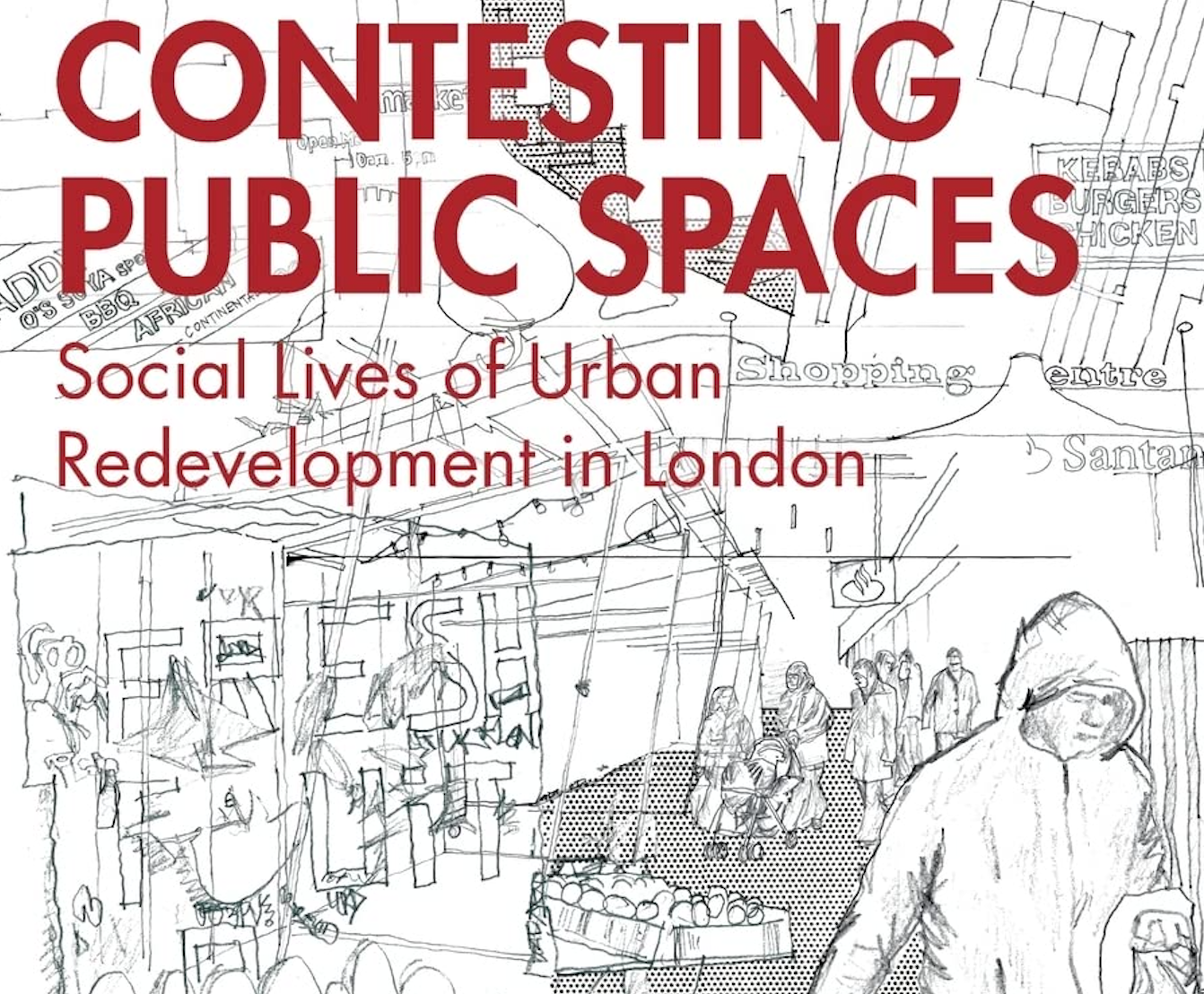Post
BOOK REVIEW | Contesting Public Spaces: Social Lives of Urban Redevelopment in London.
14 Nov 2023
By Ed Wall
Reviewed by Diane Cunningham, The London Society trustee
Contesting Public Spaces considers the changes which have taken place in three London locations - Paddington Basin, Trafalgar Square and Elephant & Castle (Market) - as a result of large scale regeneration.
Get priority booking on events - join The London Society
The three locations place public space in very different environments both in their geography and construction. At Elephant & Castle in south London, an existing area has been demolished and rebuilt; over in west London, Paddington Basin, adjacent to Paddington station went from being industrial land on the periphery of central London to a newly built canal side neighbourhood while Trafalgar Square, famous globally and considered to be London’s civic square transitioned to a managed event space.
The changing nature of public space is not new and Wall looks back to the 1980s and 90s when Canary Wharf and Broadgate Estates were being built with leading voices concerned that the public realm was being privatised.
The regeneration of Elephant & Castle is well documented and many of the problems are blamed on the lifespan of the project and it becoming too political. In considering the market in particular, which was located in the moat (the area surrounding the shopping centre), as the various components of the area were decanted and ready for demolition, the market remained but it had lost its customers. Wall recalls the power struggle in such large regeneration projects with, in this case, the market traders and small business owners having much less power than the council, the landowners and the developers.
At Paddington Basin – a complex of new build office buildings with hospitality, retail and event spaces amongst it - a myriad of organisations had spent years creating a narrative for the area, tapping into its history. However, Wall suggests that in Paddington’s attempt to create a place identity, it has become a non-place, similar to an airport or transit hub with an end in sight.
In both Paddington and Elephant & Castle, complex ownership meant the projects took longer than planned and management of some sites became overly complicated leading to the areas developing a fragmented identity. With a lack of clarity around ownership, some confusion has been created around cleaning, management and the rules in each area.
In the third location, Trafalgar Square, one of the most photographed landmarks in the world, Wall considers how it was a space which was designed as a traffic island which put the needs of pedestrians second and yet it served as a natural meeting point for Londoners and tourists alike. Following changes to create a more pedestrian friendly environment, its management transferred from the City of Westminster to the Greater London Authority (GLA). Since 2000 it has been maintained by a team of private contractors with the transfer concealing regulatory changes as it transitioned from a natural meeting place to one hosting a regular programme of events, limiting what was, in essence, loosely managed public space open to all to a tightly controlled one.
Wall concludes that all three locations were repeatedly remade through large scale transformation, with programmed events sometimes impacting daily routines taking place within the space. It leaves the reader with much to ponder about how public our public spaces really are and if more will transition to become privately managed.
Check out our rundown of upcoming events
The book will appeal to planners and architects but also to anyone interested in understanding more about how public space use and access changes as places undergo large scale transformation.
